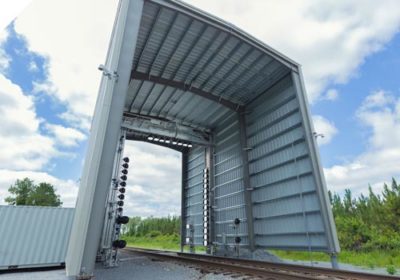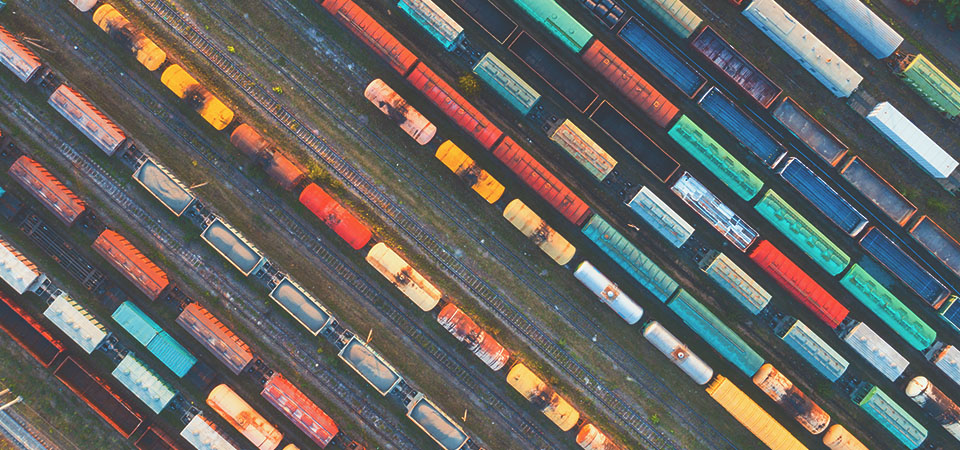In March, a 28-car freight train derailment in Gibbons, Neb., forced Union Pacific to shut down three rail lines, delaying shipments nationwide for up to 48 hours and costing it millions as its rail network slowed down substantially. Fortunately, no one was injured.
Duos Technologies, based in Jacksonville, Fla., says its NVIDIA GPU-accelerated AI railcar inspection system can significantly reduce the likelihood of such derailments due to mechanical railcar defects as well as improve safety and reduce dwell time, all while speeding up inspections by orders of magnitude.
Derailments like the one in Gibbons are a reminder of the importance and financial value of routine and timely inspections of railcars, during which defects can be spotted and repaired. According to the U.S. Federal Rail Administration, more than 5,000 railway workers are injured annually, and accidents cost the industry more than $2 billion a year.
For longer trains with human inspectors, this process can take hours. However, as quickly as it takes a human to inspect a single car, Duos Technologies’ AI-powered inspection portals can accurately inspect and assess trains moving at full speed with as many as 120 cars or more. Better yet, railcars don’t have to be offline when Duos’ portals inspect them – it happens as they’re in transit on regular routes.
The Duos Railcar Inspection Portal, which looks like a small hangar built over the tracks, includes a miniature data center packed with servers that store and process image data, complete with an AI processing farm. As many as 10 servers, each loaded with 48 NVIDIA T4 GPUs, run Duos’ AI algorithms, which are designed to detect everything from low-hanging air hoses to open doors and dragging equipment. The system, called rip, can even detect illegal riders.
 Depending upon rail traffic at a particular site, those servers process approximately 1.3TB of data every day from cameras that capture imagery from all angles. Duos is already upgrading some of its 10 operational portals with up to 25 additional perspectives at each location, including eight positioned under the train tracks and one 4K camera mounted 37 feet above the passing trains.
Depending upon rail traffic at a particular site, those servers process approximately 1.3TB of data every day from cameras that capture imagery from all angles. Duos is already upgrading some of its 10 operational portals with up to 25 additional perspectives at each location, including eight positioned under the train tracks and one 4K camera mounted 37 feet above the passing trains.
The company has even invented its own LED lighting system, which generates 4x the illumination of the sun, to provide sufficient lighting in all situations.
Pushing Technology at the Edge
To compensate for a lack of high-speed trackside connectivity, all of the computing in Duos’ portals occurs at the edge while the company tries to squeeze every capability out of its hardware. Plus, its deployments have to operate in all sorts of conditions, from Canadian locales where temperatures can average as low as -40 degrees Fahrenheit for months, to the heat, sand and dirt of the Mexican desert.
“We’ve had to push the edge of technologies that exist today,” said Scott Carns, chief commercial officer at Duos.
Duos adopted the NVIDIA Metropolis application framework to meet its desire for the latest AI-powered video analytics capabilities at the edge.
“To use AI to analyze a fleet of railcars that can be 40 to 50 years old in some cases, where every car you see is slightly different, and have it accurately detect that defect on that old tank car ― to me, that’s highly challenging,” said Carns. “It’s important that the team stays plugged into events at NVIDIA and leverages that partnership.”
From Video Analytics to AI
Duos first established itself in the early 2000s, after 9/11, by applying early-generation video analytics to secure railyards and critical infrastructure assets in various railroads. In the mid-2000s, it developed its first portals, predominantly for security and contraband inspections, which then proved popular with train operators seeking to supplement their inspection efforts.
With over 140,000 miles of rail lines in the U.S. alone, Duos was suddenly eyeing a larger opportunity and shifted its emphasis to building mechanical inspection portals.
Over the past several years, the analytics have steadily evolved from digital conversion of analog camera output into a full AI undertaking. Duos uses NVIDIA GPUs to build algorithms and train railcar inspection use case datasets.
Shaping the Market
Duos works with many of the Class I freight railroads and several of the transit agencies that operate rail infrastructure in North America. These customers purchase the portals, and Duos charges an annual licensing fee for each AI module or “use case” that handles a specific task. For instance, a customer can license an algorithm that’s built to spot missing bolts on a coupler plate.
Another key point is the additional safety this brings to railcar inspection. No longer do personnel have to crawl underneath and around railcars to inspect with flashlights and chalk. Additionally, by conducting automated, AI-based inspections, a much safer railcar is running along the tracks.
The impact of Duos’ technology is measured by its customers’ improved velocity. It’s simple math: an increase of just one mile per hour in average velocity can translate to millions of dollars in profitability.
Down the line, Duos has its eyes on expansion into Europe and the international market. Additionally, the company has started helping intermodal and distribution centers automate their gatehouse operations with AI-based inspections and mobility software, replacing the age-old model of a guy with a clipboard checking things in and out.
But where Duos is most focused now is on working with the U.S. Federal Rail Administration, Transport Canada and the various Class I railroads on allowing its technology to augment the traditional manual railcar inspection, which is still required by law.
The idea, Carns said, is not to replace humans, but to enable rail operators to reallocate them to speed up repairs. Having its AI technology sanctioned and legislated by government regulators for day-to-day use could change how railroads operate forever.
Images courtesy of Duos Technologies.
